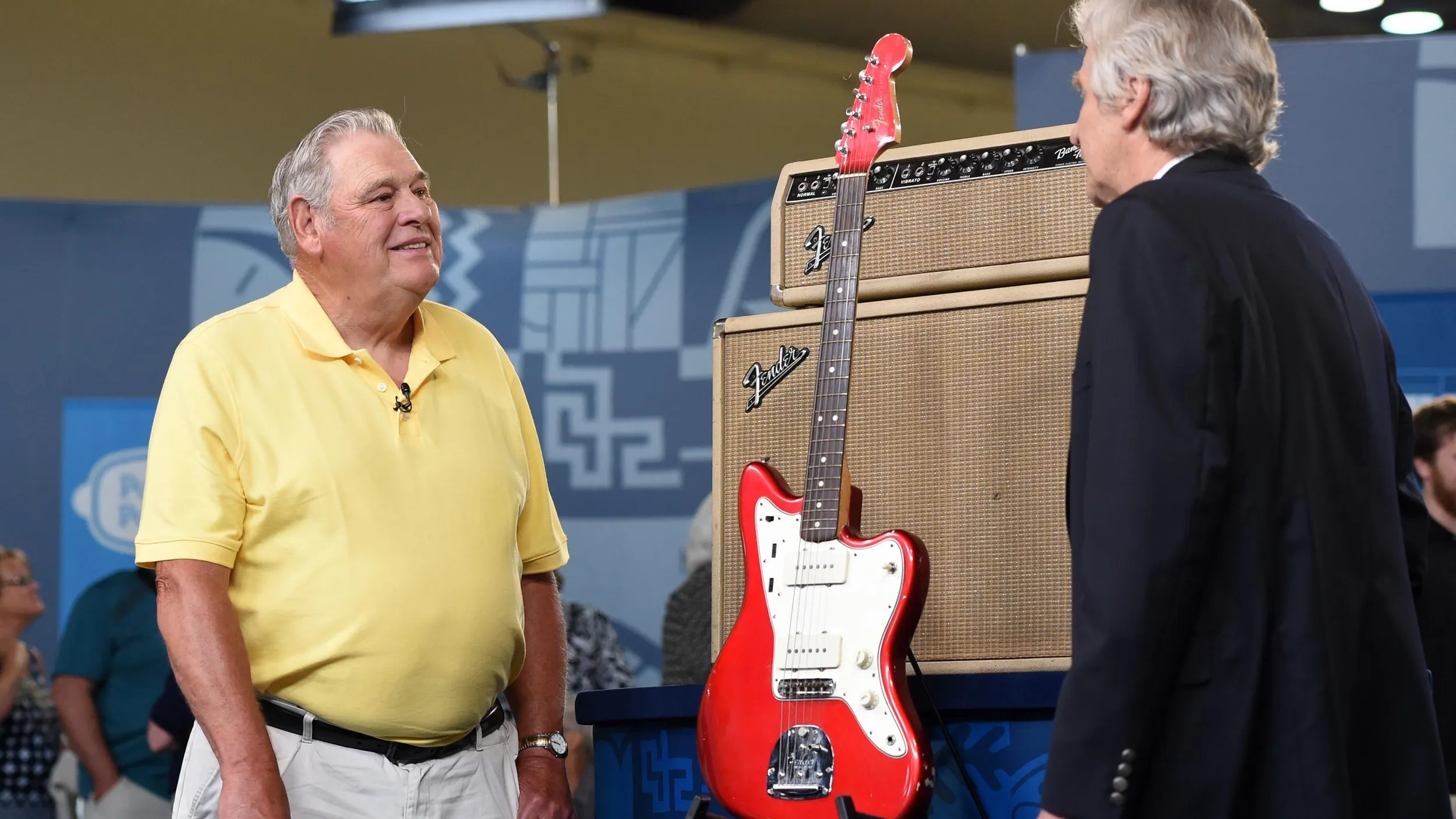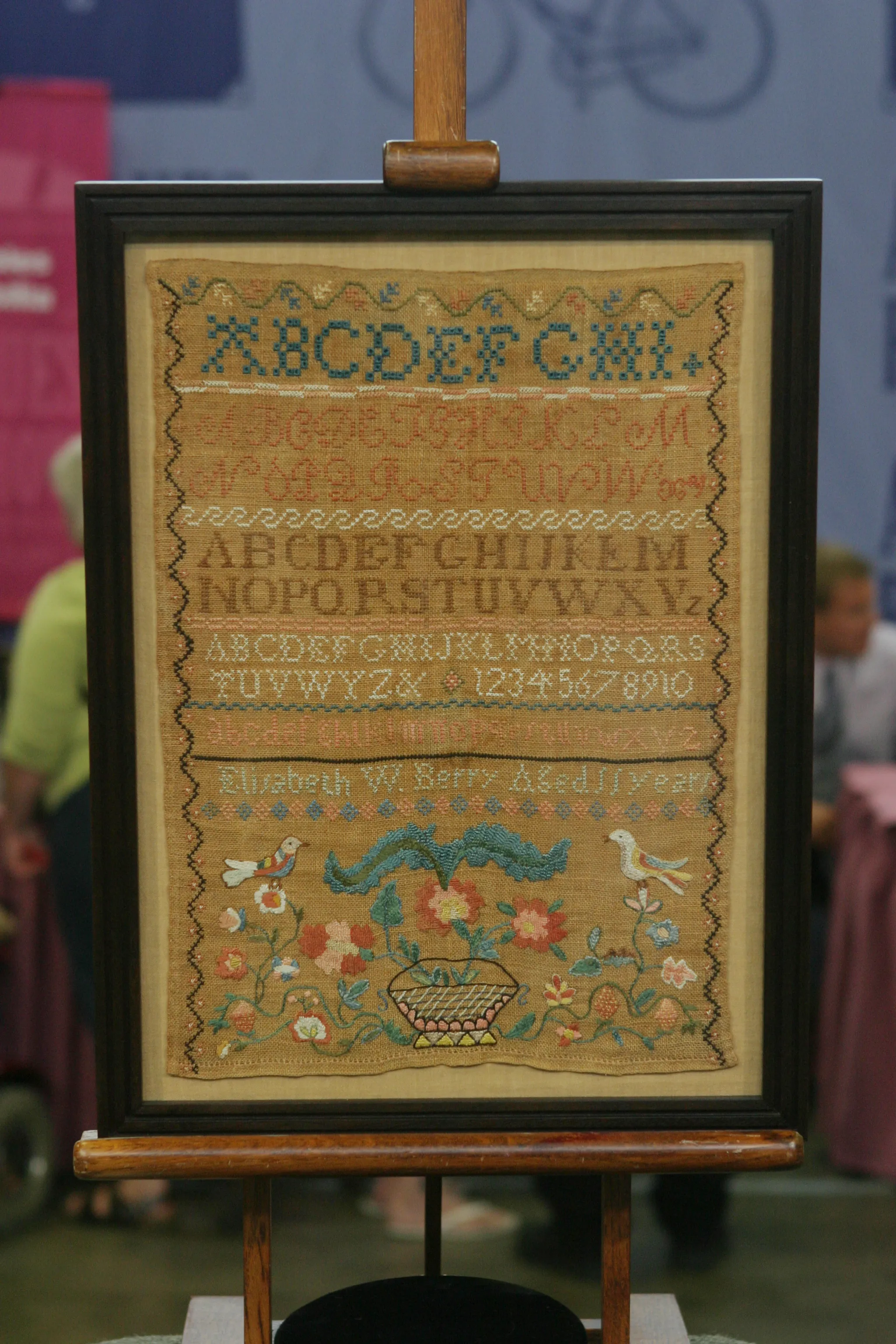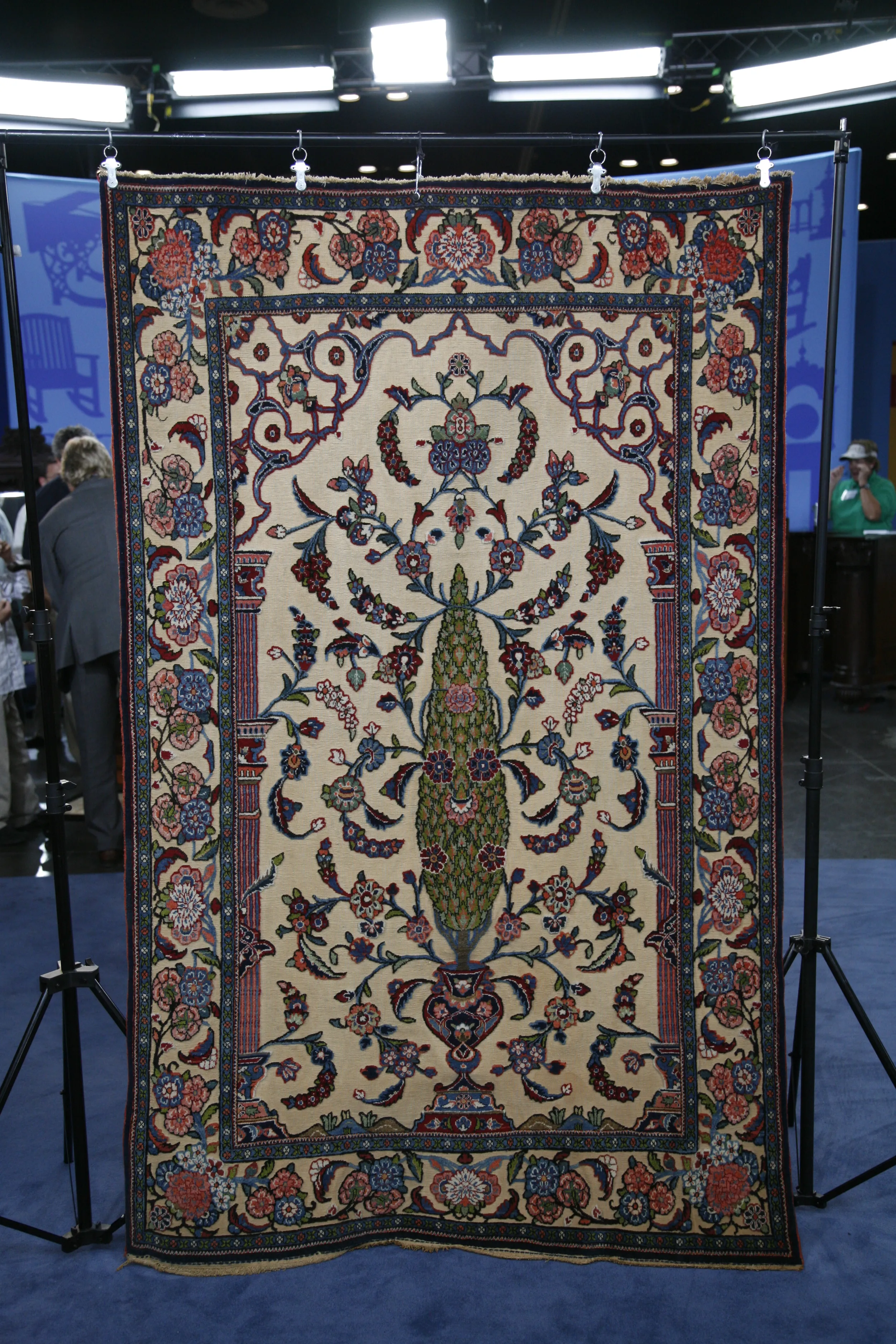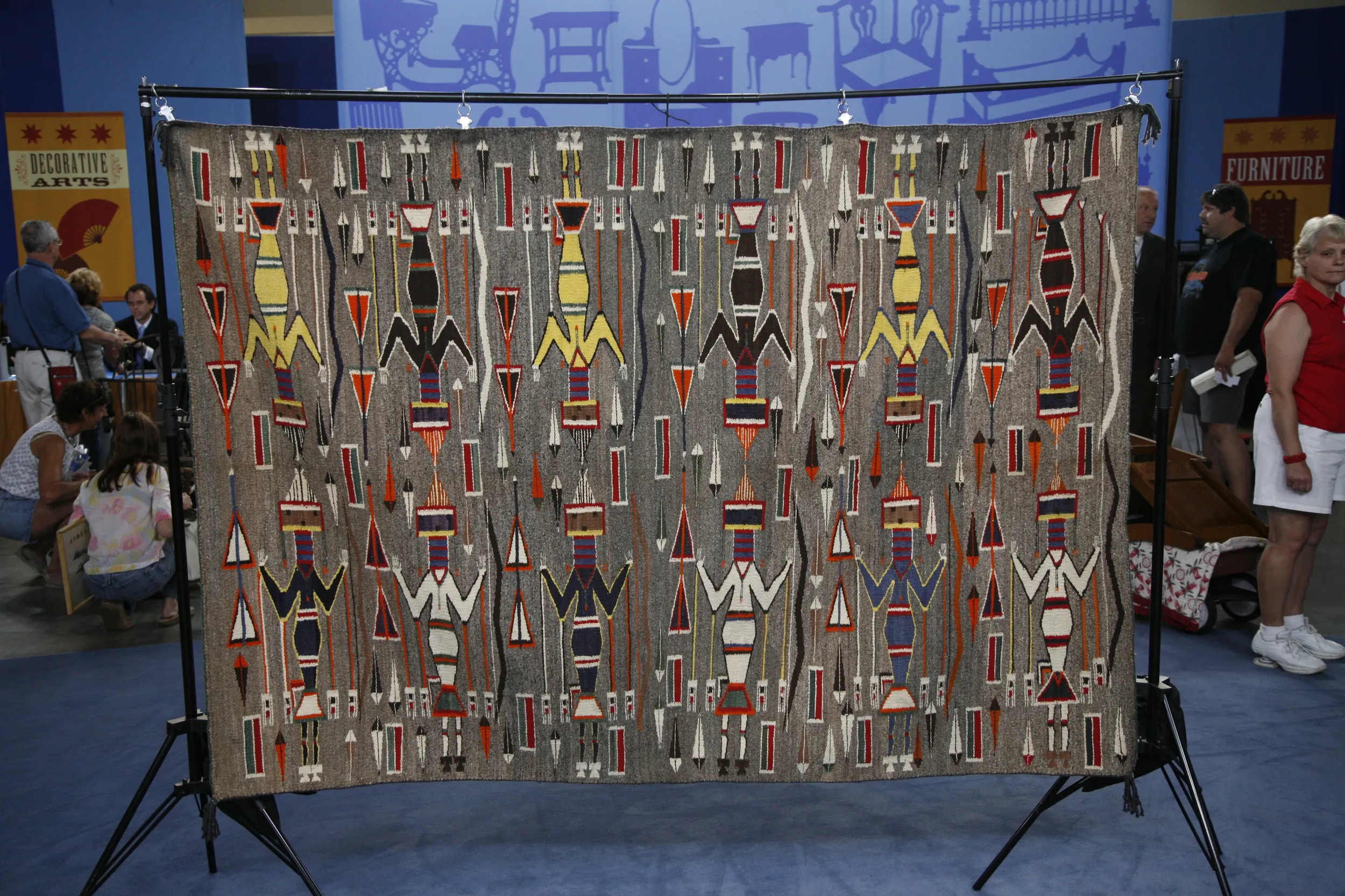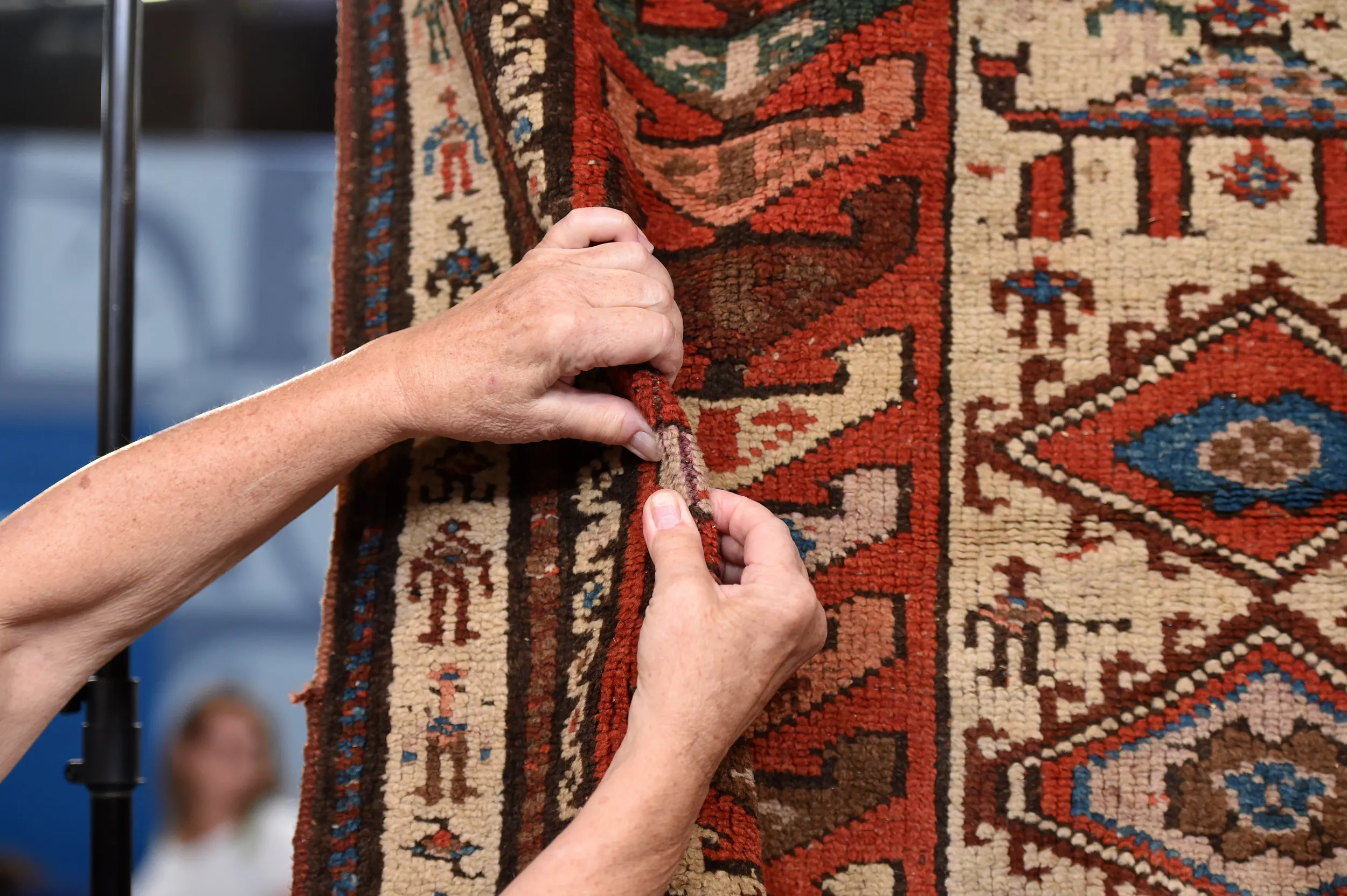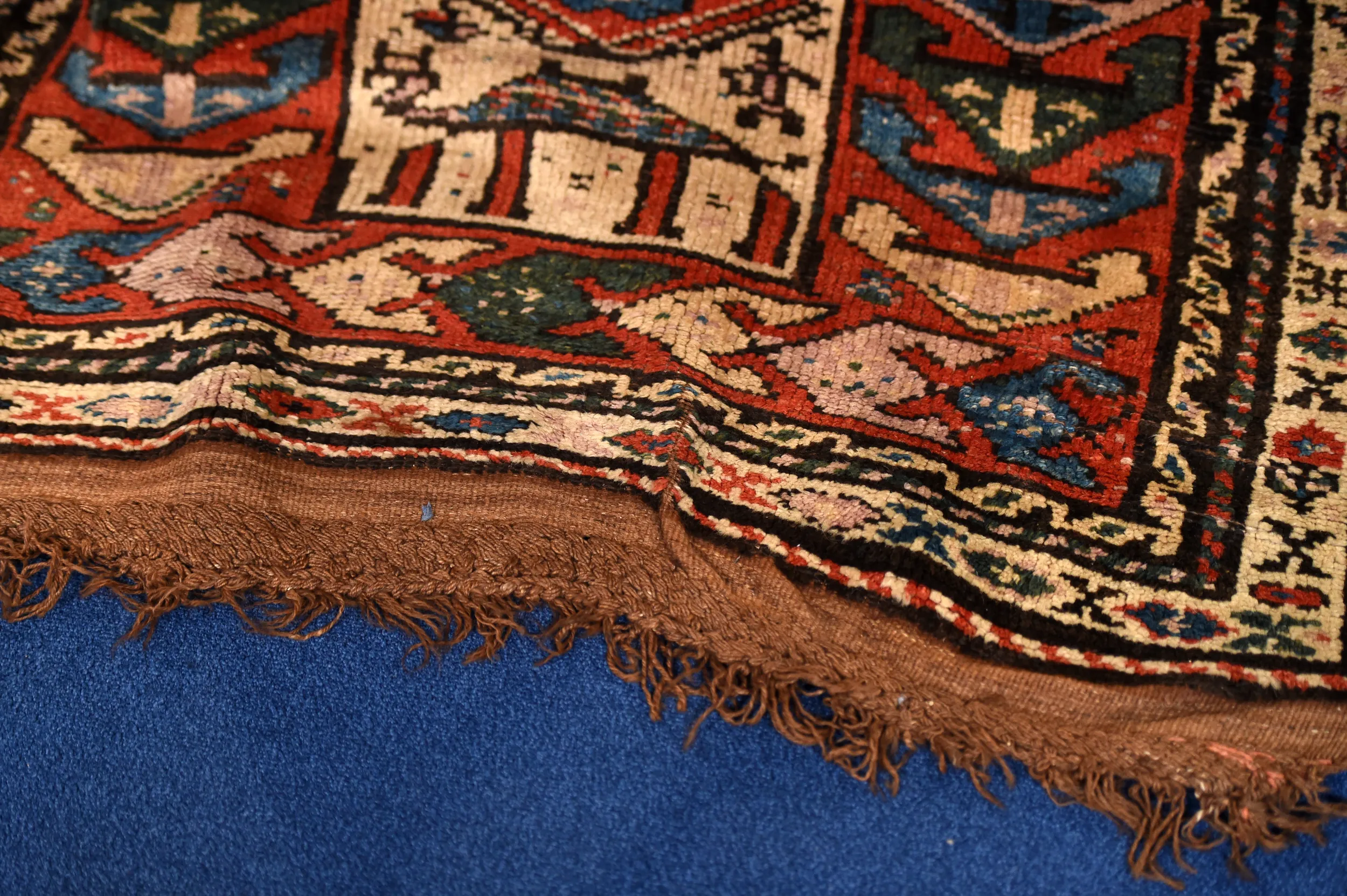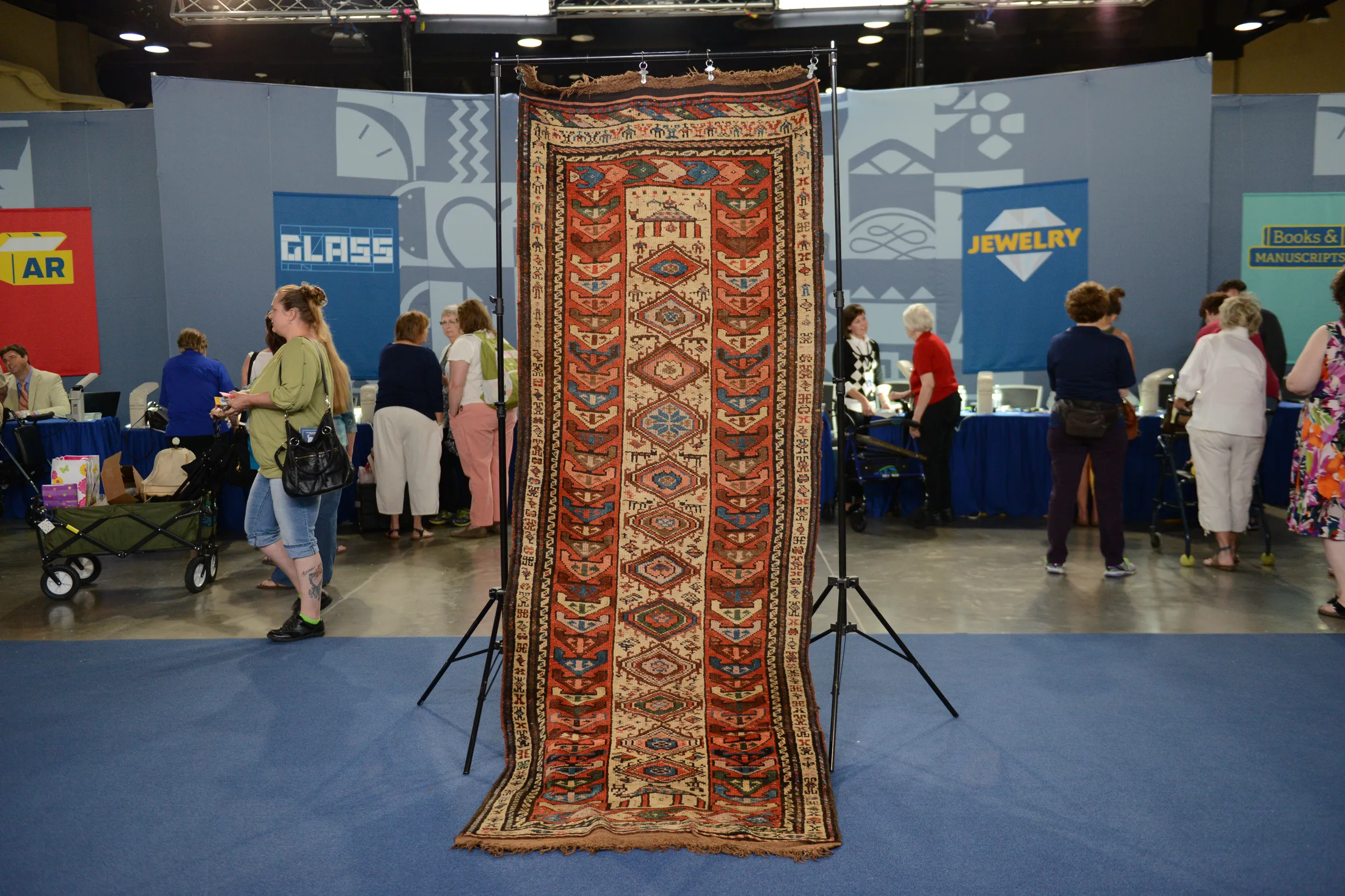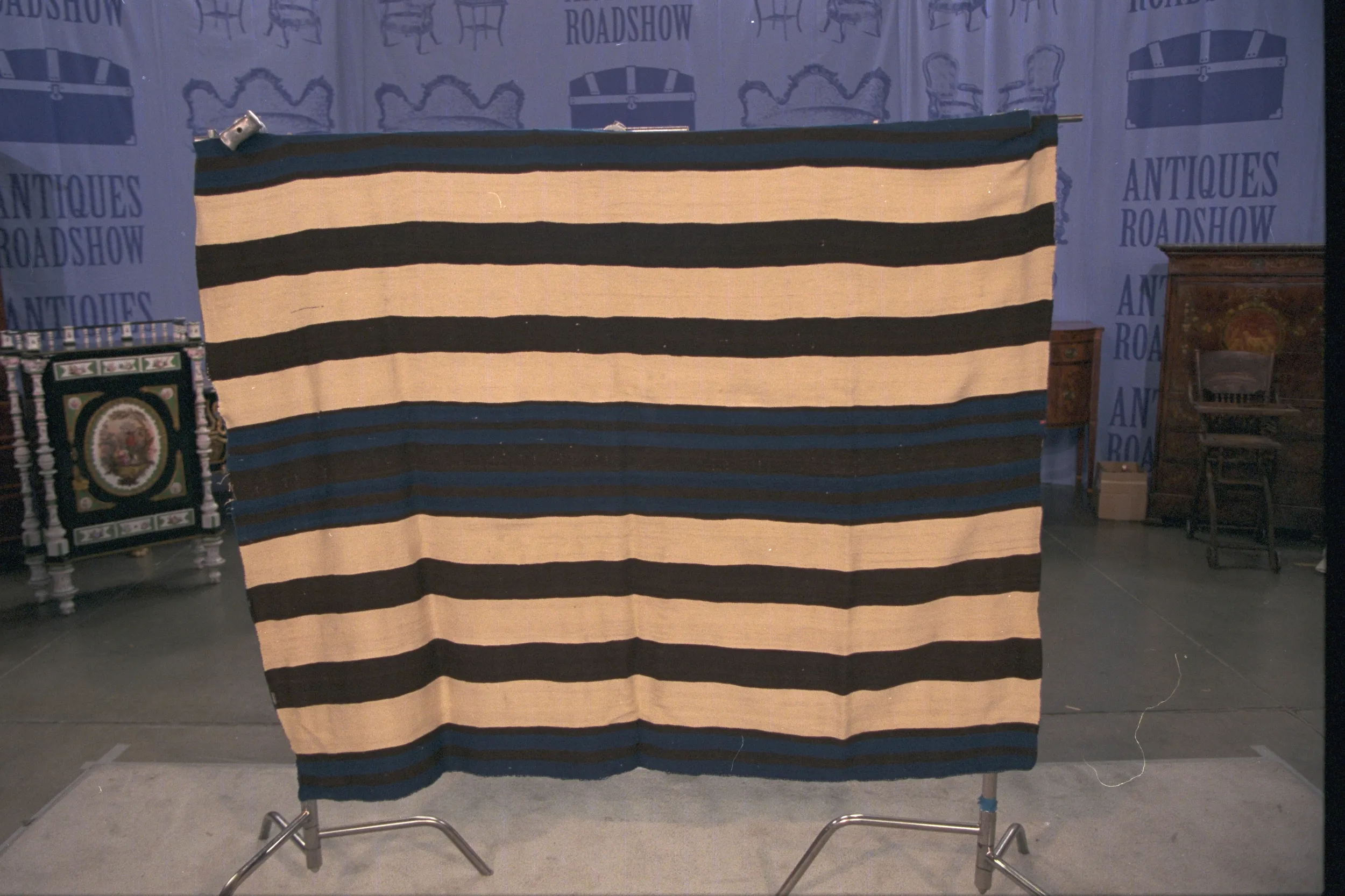GUEST: It's been in the family for years. I'm 70 years old, so it's older than that because I remember as a kid walking on it. It was my grandparents', who gave it to my uncle, and it was the one thing I really wanted and my cousin gave it to me. And I love it. I know it's Indian.
APPRAISER: Well, actually it's not an Indian rug.
GUEST: (laughing): Oh, okay, well, that tells you how much I know.
APPRAISER: This is a rug that was woven in Persia.
GUEST: Oh, really?
APPRAISER: And it's a tribal rug.
GUEST: Oh, neat, even better. Even better. I mean even better for me because I love oriental rugs.
APPRAISER: Oh, okay, well, it falls into that category, but what's interesting, it's a cottage industry rug that was made for the marketplace by nomads who were trying to capture part of the marketplace.
GUEST: Oh, okay.
APPRAISER: And what I love about it, and what I love about these rugs in general is that they're very primitive and naive. And the women that were making them were left to their own devices because these were not expensive rugs in their day, and they could be creative. So in the case of this rug, there's a wonderful camel that's depicted right here.
GUEST: Oh, I see it.
APPRAISER: With a little person on top of the camel. And then in the border you have all these human figures.
GUEST: Wow, yeah.
APPRAISER: Through the border, all the way up and down. So the reason that these rugs are very geometric is because they are coarsely woven.
GUEST: Mm-hmm, mm-hmm.
APPRAISER: And so even though they might like to do a realistic interpretation of a tree or a flower, it's like pixels on a computer. There's so few knots per square inch that everything ends up being geometric. It has a great range of natural dyes and there's just a real exuberance to the design and a primitive quality that is more apropos to today's market than the more fancy rugs you might be familiar with. There's this amazing macramé end finish that is done in undyed brown wool.
GUEST: Right.
APPRAISER: And this is yet another indication of the fact that they were a small production that had enough brown sheep on hand that they could come up with that amount of wool for their warp threads. Now, one of the things that helps us date a piece like this is the dyes. And the majority of these dyes are natural dyes, but there's one synthetic dye that dates back to the 19th century, and it's called fuchsine. There's a aspect to the dye where if you fold the pile back, and if you look at the root of the knot?
GUEST: Yeah.
APPRAISER: Do you see how it's purple?
GUEST: Yeah!
APPRAISER: So this dye was introduced in the 1860s, and it faded from a purple to a beige.
GUEST: Oh, so these used to be purple.
APPRAISER: That used to be bright purple.
GUEST: Wow.
APPRAISER: And that actually is an assist to our dating the rug because if this rug were 60 or 70 years old, that dye wasn't even in use anymore.
GUEST: Oh, really, so it's really old.
APPRAISER: Yeah, so this is about a 1900 rug.
GUEST: Right, wow.
APPRAISER: Well it's in strikingly good condition for its age. Now in terms of value, I would say that in today's market, if you had to go out and buy a rug like this, you'd have to pay about $4,000 retail.
GUEST: I'm... I'm sure. (laughing) I... I buy oriental rugs, I got it.
APPRAISER: Yeah, so you have a newfound appreciation for the rug.
GUEST: Absolutely.

